#nikkor 135/2.8 ai
Video
Dissipate by J Radcliff
Via Flickr:
Nikon F3, Nikkor 135/2.8, Lomography Redscale XR@125
#Nikon F3#nikkor 135/2.8 ai#lomography redscale xr#35mm#slr#film photography#redscale#reverse#emulsion#base#analog camera#prime lens#telephone poles#telephoto lens#utility poles#electricity#grid#infrastructure#midwest#rust belt#industrial#urban#wires#metal#wood#copper#vertical#stand#power#lines
1 note
·
View note
Video
Passing scenery in Cahors, France. 2022.06.29 by r~
Via Flickr:
Nikon FM2n Nikkor 24mm f/2.8 ai Kodak Portra 400 2022086-13a
#Nikkor 24mm f/2.8 ai#Kodak Portra 400#Analog#Film#C41#Color negative#color film#135#35mm film#France#Travel Photography#Europe#Cahors#flickr
1 note
·
View note
Text
バイトその2
le vendredi 15 février / 2019年2月15日(金曜日)

きょうは研究協力のために大学へ。今,研究室にいます。朝,現像されたフィルムが届いていたので早速見てみました。後ほど載せますね。
間も無く先生が来て,実験室に案内してくれました。眼筋の測定。以外に集中力が必要でした。単調な実験だからと,先生がYouTubeで洋楽をかけてくれました。Shape of Youとか,Maroon 5のSugarとか,Countn’ starsとか。スタンダードナンバー(?)
数十分後,
「どんな曲が好きなの?洋楽?邦楽?声入ってるやつ?」
「ん~,リクエストしても良いですか。」
「良いよ。」
というわけで早速。
ベートーヴェン 交響曲第9番(カラヤン指揮,ベルリンフィル)を。
「カラヤンのってありますか?」
「ああ,丁度カラヤンのが出たよ。ベルリンフィル...去年解禁されたんだね。1968年の録音...50年前か..」
全楽章を鑑賞しました。圧巻です。いつもは通学のBGMとして聞いてはいますが,鑑賞したのはOEKによる生演奏以来。
続いて,
シューマン ピアノ協奏曲イ短調(アバド指揮,P:ポリーニ)
先生「色々あるよ。ツィマーマン,マルタ・アルゲリッチ,アンドリュー・フォン・オーエン,クラウディオ・アバド / マウリツィオ・ポリーニ...ポリーニ有名だよねえ。」
わざわざスピーカーを接続して再生してくれていました。
音楽もそうですけれど,良い体験が出来ました。眼の周りに電極を貼り付けたりして,楽しかったです。写真撮ってもらえば良かった...。
あと,時々広告が入ってくるのが楽しかったです。ローソンの「ちょい乗り自動車保険」。動画がYouTubeの公式チャンネルに上がっていました。しかも,今日アップロードされたばかり。
BGMの合間に何度も聴いたので耳に残っちゃいました。楽しいCMではありませんか。最初はラジオか何かかな?と思ったのですが,広告だったのですね。古めかしい意匠で制作されていて,音だけ聞いているとラジオ感があります。
帰りは学内の郵便局へ行って,フィルムの現像料の振り込みを済ませました。
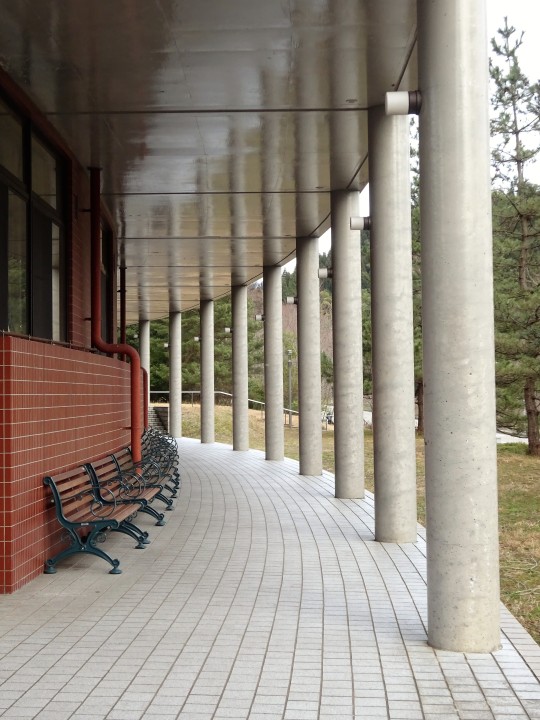
大学会館で,オケがパート練習をしているのを目撃。大きな弦楽器やフルートなどきらびやかでした。
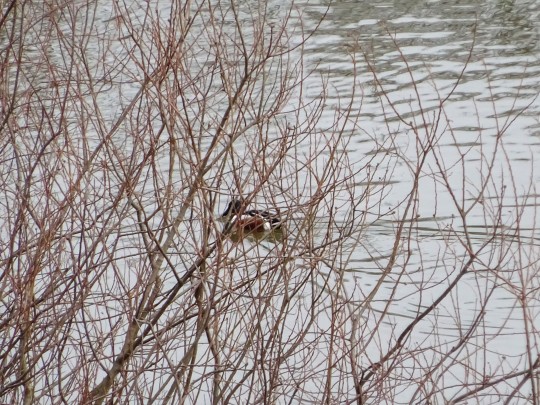
カモを一羽だけ観測できました。貯水池みたいな所に群れで泳いでいるのです。以前撮影した写真がこちら。
カシャッ!
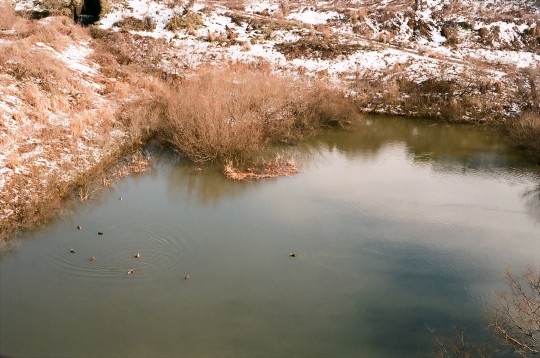
今朝届いたばかりの銀塩写真です。
バスで帰ります。
カフェには行けず。また来週にでも行きましょう。
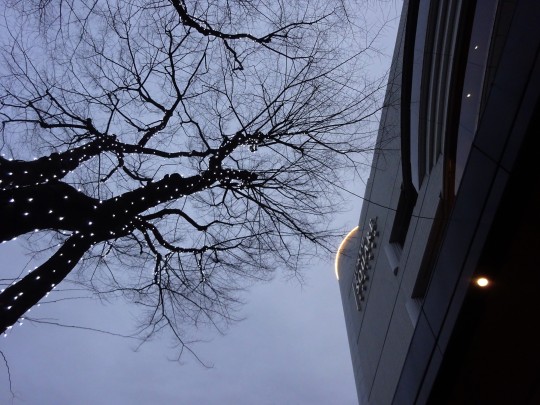
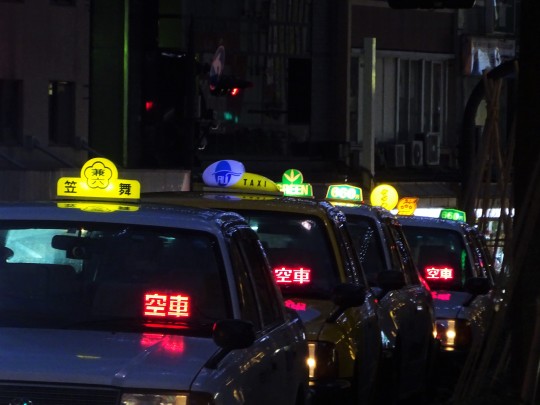
段々とライトが目立つようになってきます。
駅から家まで,ガクッと落ち込みましたがそれ以外はとっても健康でした。
明日もこの調子でレポートを頑張りましょう。
ではお約束どおり,フィルム写真をご覧に入れます。待たせたわりには全然大したこと無いのですけれど。
フィルムもカメラもレンズもいつも通り。
ASA100の業務用フィルム(135-24) / ニコンFM / AI NIKKOR 50mm F1.8 S
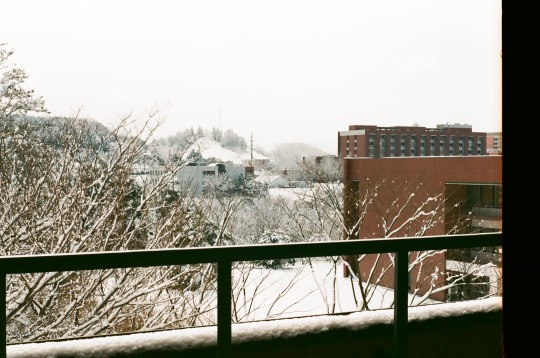
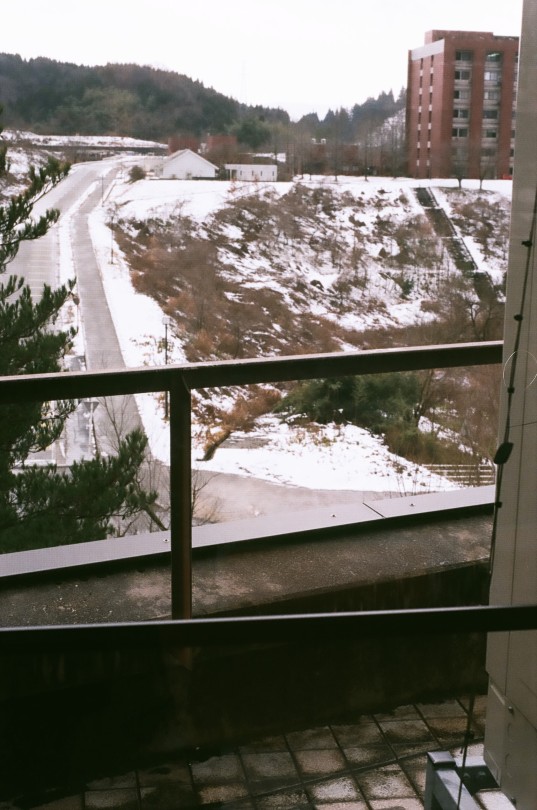
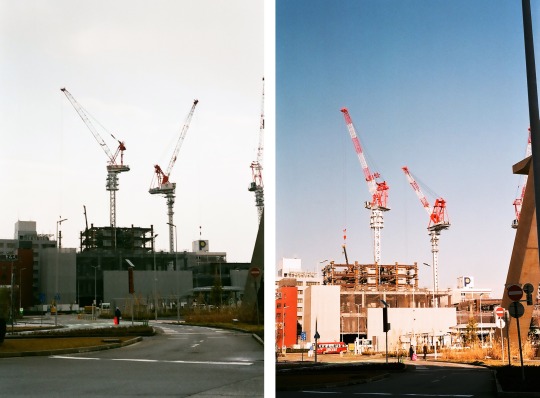

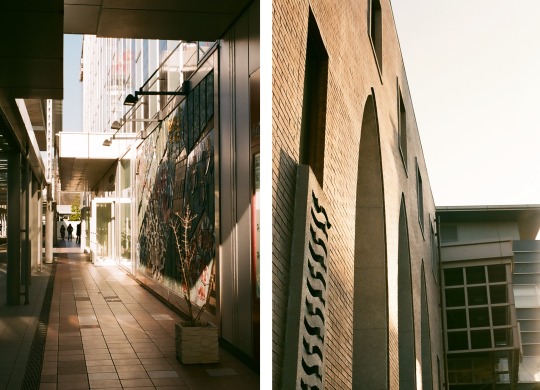
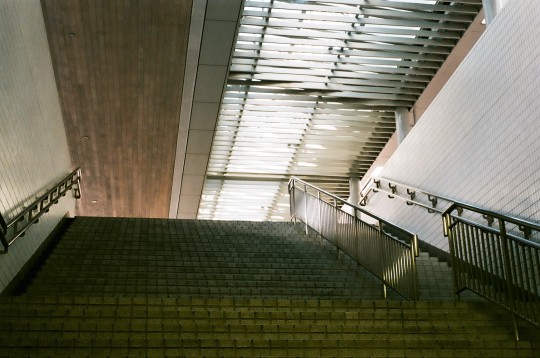
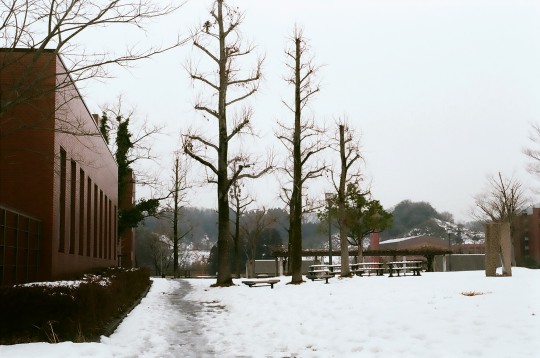

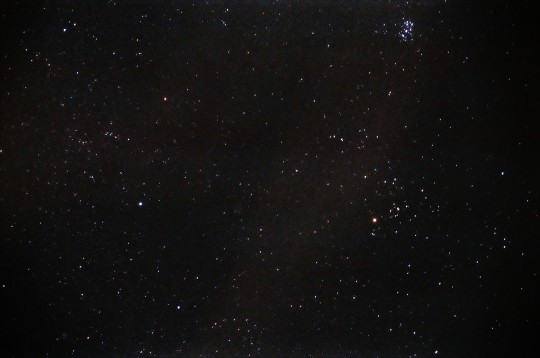
綺麗でしょ!弟をバス停まで迎えにいった時に撮ったのです。三脚を持ってこなかったので車の屋根にカメラを固定して,50mmのレンズでF値を1.8⇒2.8にし,シャッターを30秒間 開けっぱなしにしました。
気軽に撮った天体写真ですけど,今までで一番うまく撮れたし撮っているときも楽しかったです。やはり気軽に撮れるのが性に合っているようです。三脚を立ててフードを付けてレリーズを付けて...と重装備だと失敗が許されない気がして..。
冬は空が澄んでいるのでまたチャレンジしたいです。
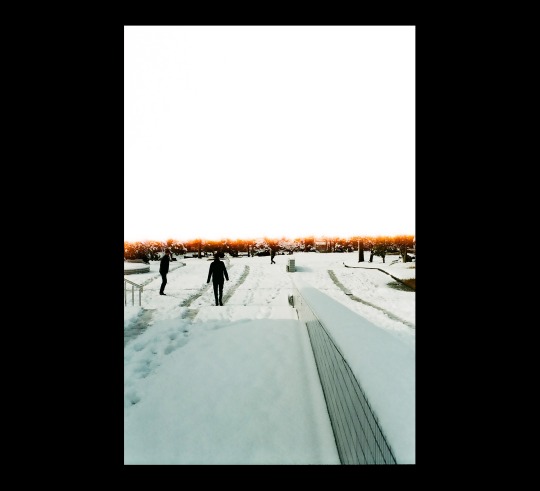
ゼロ枚目。フィルムの最初の一コマには不思議な愛着を覚えます。感光していて写っていない範囲があるのが他の24枚とは違うので。いつか0枚目だけ集めて写真展に飾ってあげたいです。
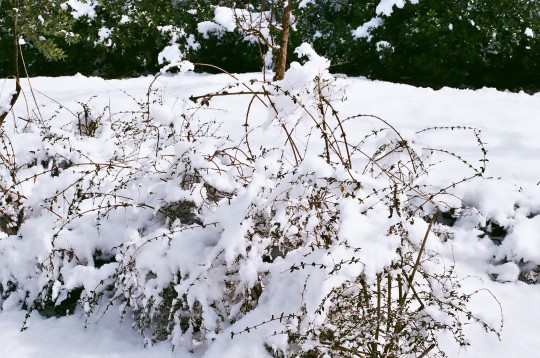
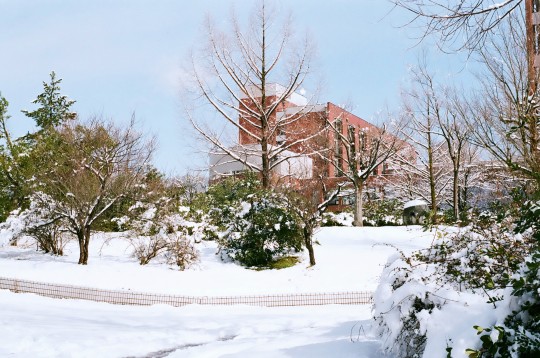
雪が積もった日,嬉しくて何枚も撮っていました。晴れていると雪が輝いて見えて美しいです。
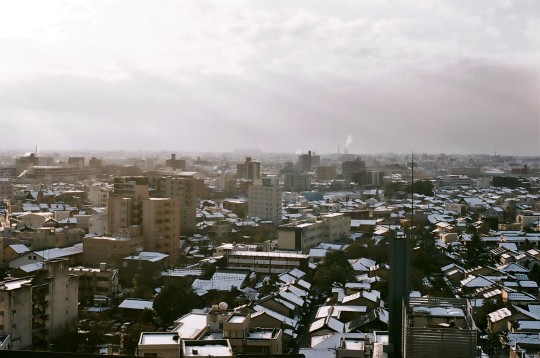
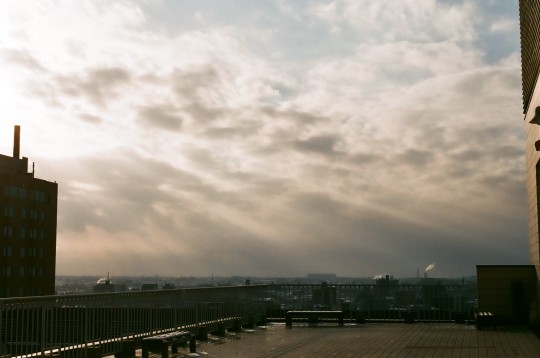
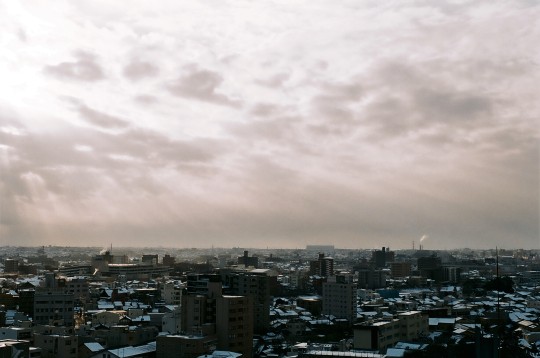
デパートの屋上に昇った時のものですね。色々なアングルを試していたのでした。

いつもとは別の道を通ってカウンセリングに行った時。
夏には青々とした並木になって,壮観です。いつか友達をポートレートしようと思います。

香林坊で夜景を撮るときの定番スポット。


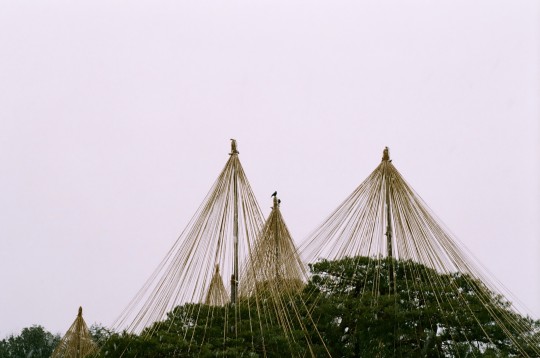
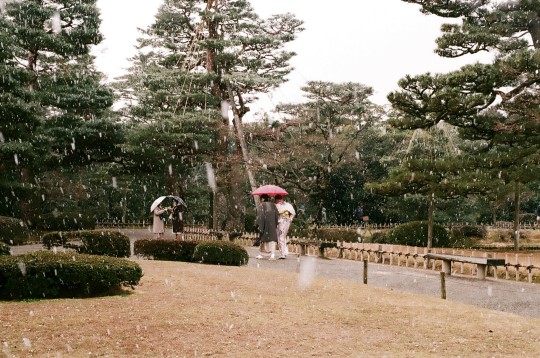
兼六園で撮ったものですね。
余談ですが,兼六園の近くに小立野という街があって,散歩したいなあと思っています。
冒頭でも触れたように,今回は格安現像サービス「超プリ!」を提供してくれるサンキューフォトさんにフィルムの現像&データ化をお願いしました。火曜日に送ったら水曜日に着いて仕上がり,金曜日(;今日)に受け取れるという快速。画像は茶色を基調としたトーンで,コダックの同プリを思い出させます。
早いし郵便振替も現金で出来るので,気軽に頼めるお店です。
それに,何と云っても安いです。カメラ屋さんで現像+データ化を頼むと1,100~1,300円はかかるのに対し,2本まとめて送ると
超プリ:726円 気軽,早い
プリネットワン:625円 綺麗!!
と,爆安。
ネットのラボは安くて良いですね!ハマりました。
そういえば今日は,
小さな女の子を連れたご夫婦とすれ違いました。お二人とも一眼を提げていて,女の子の手にも何と,「写ルンです」が ! 良いなあと思いました。無事に大きくなってくださいね。
バスに乗るとき。すぐ近くの教会から鐘が聞こえてきて,時計を見ると正午でした。良い音色!
ほんの些細なハッピーなことを大切にしまっておきます。何より,生きるための灯し火になります。
来週は木曜以外はずっと家に籠もります...。再び空虚感に襲われるのでしょうか。でも,お散歩したり映画観たり,楽しいと思うことをやって上手に気分転換したいです。絵も良いですね。
とにかく明日はレポート頑張りますね。
M Bはこれからお風呂に入って眠ります。
おやすみなさい。
2 notes
·
View notes
Text
Nikon Z 70-200 F/2,8 Vr S

Tieniti sempre pronto. Grazie alla gamma di lunghezze focali di 70-200 mm, alle ottiche avanzate e a una protezione completa delle condizioni atmosferiche, questo luminoso obiettivo mirrorless a pieno formato copre tutti gli utilizzi di base. A prescindere che lo utilizzi per riprese sportive, di eventi reportage, la struttura eccezionalmente compatta ti consente di andare lontano.
PROFESSIONALE
70–200 MM
DIAFRAMMA FISSO
F/2.8
TRATTAMENTO
ARNEO
QUALITÀ
S-LINE
DISPLAY
OLED
Pronto per qualsiasi missione
Indipendentemente dal fatto che tu stia acquisendo l'azione con immagini fisse o con un video, l'obiettivo NIKKOR Z 70-200mm f/2.8 VR S sarà sempre all'altezza. La messa a fuoco è fluida, veloce e silenziosa e tutti i componenti della scena vengono resi con una nitidezza eccezionale. Puoi controllare i parametri di ripresa direttamente dall'obiettivo. Inoltre, la struttura è sufficientemente robusta da resistere all'usura dell'uso professionale quotidiano.
Bellissimo effetto bokeh
L'ampia baionetta Z-Mount e l'apertura costante a 9 lamelle circolare f/2.8 consentono prestazioni entusiasmanti in qualsiasi condizione di luce. Questo teleobiettivo zoom ti garantisce anche un effetto bokeh dall'aspetto naturale, uniformemente sfumato ai bordi del fotogramma.
Oltre la nitidezza
La nitidezza è eccezionale in tutto il fotogramma, anche durante le riprese alla massima apertura o a distanza ravvicinata. La distanza minima di messa a fuoco è di soli 0,5 m all'estremità più ampia della portata dello zoom e di 1 m all'estremità del teleobiettivo.
Addio alla luce parassita dell'obiettivo
Il rivestimento Nano Crystal Coat e quello ARNEO contrastano gli effetti dell'immagine fantasma e della luce parassita. Le lenti ED e SR di Nikon contrastano l'aberrazione cromatica. Inoltre, la lente SR compensa la luce blu, più difficile da controllare. Di conseguenza, avrai immagini più nitide e con un contrasto migliore.
Pronto per il video
Se la tua storia necessita di un video per comunicare al meglio, sarai certo di ottenere un controllo preciso sulle riprese. Il pannello informativo dell'obiettivo presenta una scala della profondità di campo, per consentirti di determinare con facilità la distanza minima e quella massima in corrispondenza di qualsiasi valore f/. La variazione della lunghezza focale è sempre presente e il controllo uniforme e stabile dell'apertura segue le modifiche naturali dell'esposizione in tutta la scena.
Caratteristiche tecniche
Tipo
Baionetta Z-Mount di Nikon
Formato
FX/35 mm
Lunghezza focale
70-200 mm
Apertura massima
f/2.8
Apertura minima
f/22
Schema ottico
21 elementi in 18 gruppi (inclusi 6 elementi obiettivo ED, 2 elementi asferici, 1 elemento in fluorite, 1 elemento obiettivo SR, elementi con trattamenti Nano Crystal Coat e ARNEO e un elemento obiettivo anteriore con trattamento al fluoro)
Angolo di campo
Formato FX: 34° 20'–12° 20', formato DX: 22° 50'–8°
Scala delle lunghezze focali
Graduata in millimetri (70, 85, 105, 135, 200)
Sistema di messa a fuoco
Sistema di messa a fuoco interna
Distanza minima di messa a fuoco
Posizione dello zoom da 70 mm: 0,5 m, posizione dello zoom da 85 mm: 0,63 m, posizione dello zoom da 105 mm: 0,68 m, posizione dello zoom da 135 mm: 0,8 m, posizione dello zoom da 200 mm: 1,0 m (misurata dal piano focale)
Massimo rapporto di riproduzione
0,2x
Riduzione vibrazioni
Sì. Decentramento ottico con motori voice coil (VCM)
Numero di lamelle del diaframma
9 (apertura circolare del diaframma)
Dimensione attacco filtro
77 mm (P = 0,75 mm)
Diametro x lunghezza (estensione dall'innesto dell'obiettivo)
Circa 89 mm di diametro massimo x 220 mm (distanza dalla flangia di innesto obiettivo della fotocamera)
Peso
Circa 1440 g (con il collare del treppiedi), circa 1360 g (senza il collare del treppiedi)
Autofocus
Sì
Messa a fuoco interna
Sì
Messa a fuoco
Auto, Manuale
Accessori in dotazione
Tappo dell'obiettivo LC-77B (tappo anteriore), tappo dell'obiettivo LF-N1 (tappo posteriore), paraluce HB-92, custodia per obiettivo CL-C3
Read the full article
0 notes
Photo

%^ Nikon Nikkor Ai-S Ais 135 mm f/2.8 Lens **EXCELLENT** Condition https://ift.tt/315M1jd
0 notes
Text
Hey Babe, Take a Walk on the Wide Side
Full apologies to Mr. Reed for the title but the trite cliche just jumped right out at me. Back to attack in sunny Bangkok once again this month to look at things from a new angle, a very wide angle to be more precise. Despite typically preferring 35mm as a standard lens on a 135 film camera, I don't often find myself tempted to go significantly wider than that. I have however thoroughly explored 28mm from time to time as I liked the added drama this gives and it's not too far of a step away if somebody is already used to seeing the world through 35mm eyes (or Leica goggles for that matter). It was the work of Winogrand that first caught my eye for the 28mm focal length and I enjoyed it in the past shooting film on both Nikons and Leica M's for out and about in the city kind of work (my top choices on black and white film were the AI-s 28mm 2.8 Nikkor and Elmarit 28mm v3 in case anybody's interested). Other than that and a very brief fling with an 18mm 3.5 AI-s Nikkor ten years ago, I haven't ever really had a good long run with any quality glass at the really wide end of things.....but that all seems about to change!
In Leicaland, I have always been very intrigued by the 21mm Super Angulons, namely the f4 but especially the 3.4. Some tatty versions of the former often float about in Bangkok and are not generally too hard to score but I really had serious lust for the 3.4 and to find the right one in great condition isn't as easy as with other classic Leica glass. So, why the 3.4 anyway? Well, after having trawled threads on the more credible sites such as Rangefinderforum that pertain to this classic, it shows what can be done with such glass and my interest was only piqued even further through conversations with other photographers whose work I very much admire (both with and without this lens) when they sang the praises of the 21SA. I was interested to see what could be done on the street with this focal length on a Leica M film body in and around Bangkok on my beloved black and white films of choice.
Regular readers might well know by now that I generally prefer to shoot on film and do so using classic German glass of the 50's and 60's, in fact to me, sixties Leica glass and the way it renders on good quality black and white film is pretty much about as good as it gets. The high res, uber sharp yet low contrast 'National Geographic of the sixties' look just never gets old to me, it's just so classic. Remember, you can also nudge a slider after the fact to bump up as much contrast as you want in Photoshop but there is no 'make it look like the best of the best lenses from Leitz in 1965' slider option in any software that I am aware of. I fully understand why people prefer clinical, sharp looking Leica ASPH glass and why they wanna pay out the big bucks for it but for me I just can't get enough of that old timer, 3D looking glow packed Leitz goodness. Already owning some of the classics from this era, I felt the 21mm Super Angulon would be an ideal match. As I am always wary of becoming a hoarder, I choose any new item carefully these days. I also force myself to use what I have, which isn't always that hard but I do stick to this quite religiously. I also seem to be in the minority in that I actually prefer the silver lenses, especially of this time period. There's just something about the satin matt chrome over solid brass stuff that rocks, the very pinnacle of its type and something we'll not be likely to see again anytime soon. Of course, finding one of these lenses then got harder if I was going to score a silver one too.
Fast forward a little ways and I am delighted to say that I recently stumbled upon one in pristine condition, from the 1960's and with a mint condition original silver Leica finder. Trying to eyeball a 21mm without the finder is not recommended. You can get away with it with other focal lengths to an extent (a top tip is that for the Elmarit 28mm, a regular .72 Leica finder window will give you a pretty good built in finder if you just ignore the frameline sets and use the whole of the window when using a 28mm, saving you money and having to use external add ons) but there are no cheap and dirty life hacks laying in wait for the new 21mm user on a Leica M though, you really do need all the framing help you can get here. Oh well, the (pricey) finder is clean and clear with the original factory silver brightmarks in great shape. Plus, it doesn't rattle its loose elements when shaken next to my ear like so many of the original period metal Leica finders now seem to this long after the fact, which is always a bonus. The good news didn't stop there either as the very specific lens hood (a must for this lens and only shared with one other Leica model I think?) was also available as a set. Due to the huge rear of this beast, it also needs an odd and very deep Leica end cap which is hard to find (can you spot a pattern here?) and this came with a non original but frankly probably shiny brand new better metal aftermarket one which is simply amazing. This particular lens was recently imported from Japan which, as we all know, is a real haven for Leica vintage gear in top condition. The only bad news was the price, these ain't cheap and everybody knows it, especially the person you might find wishing to sell you a pristine one. I suppose I should at least be grateful that these can't be used on the modern digital full frame Leica M bodies without heavy purple colour fringing ruining the shots (they work ok in black and white modes though I believe) otherwise such prices would no doubt be even higher.
So, there was nothing left for it but to hit the streets with a roll or two and I'm throwing some of these up here with this post and please bear in mind that I haven't had long enough with this puppy to get the hang of it yet, I can already see it's going to take some time. This ain't no 50mm! Many people (including me) found that going from a 35mm for 28mm for street work was harder to handle due to the amount of extra elements in the frame. Well, suffice to say that if we apply that thinking to 21mm, it's not hard to see why things get a whole lot trickier indeed. Have to say though, it really is great fun, especially in a city like Bangkok. As time goes on, I'll probably check back in with you all on the blog with more 21SA 3.4 shots and musings but just wanted to say that so far I am really enjoying the drama and fun with this lens and it really gives a look that I am fond of. The best way I can describe the shots from it is to say that it looks like a much wider version of the 35mm Summilux pre-asph and if you like that sort of style or the look of the 35mm Summaron 2.8, 50mm Rigid V2 Summicron and 90mm Elmarit V1 lenses, then you'll probably fall in love with the 21SA 3.4. It's very sharp in the centre and I like the fall off to the edges, it renders beautifully with some signs of vignetting at wider apertures but that's just something that I think will only add to the character of the shots on film and hey, it's a 21mm after all. I don't rate lenses by shooting walls and using measuring charts, I like high quality glass with real character and my tastes are purely subjective and might not match what others have to say about a certain lens. Suffice to say, so far so good and highly recommended!
CCP
0 notes
Text
Early Impressions of the Nikon FM3a

Background
I enjoy very much the feeling of shooting film, and using classic camera equipment from the glory days of Japanese craftsmanship. I derive a great deal of enjoyment from film cameras that I do not feel when shooting with modern DSLRs, even though digital cameras are vastly more practical (and considerably less expensive). And I live in Tokyo, which is literally a mecca for photography and camera equipment. There is a huge thriving used market that I love to explore and acquire items for my favorite hobby.
I often shoot film with a Nikon F3HP, and also use a variety of other Nikon film cameras (both manual and electronic). I have a collection of manual Nikkor lenses (28/2.8 Ai-s, 50/1.4 Ai-s, 55/2.8 Ai-s, 85/1.8 Auto-H, 135/2.8 Ai, 80-200/4 Ai-s) that I mostly use with these older film cameras, although they sometimes find their way onto a DSLR. I also have a cool drawer in my refrigerator at home that is full of various film stocks, ranging from monochrome to negative color to positive color. And living in Tokyo, when I am not too busy, I can get developing and printing services at some of the world’s finest labs.
Although I already use the F3, I’ve also been looking for the perfect all mechanical film camera for a while. I’ve been considering the F2AS, but finding a quality copy of this classic is not trivial. In any case, since I’ll eventually own every classic Nikon body, it was inevitable that I would eventually own a copy of the FM3a, considered by many Nikon fans to be the pinnacle of the classic style of SLR, but which was produced relatively recently (up until 2006). It is said to be the best of both worlds, combining both an electronically and mechanically controlled shutter system, stepless metering in aperture priority, advanced TTL flash capabilities with a regular hot shoe, many of the best features of the F3, and the same classic Nikon build quality that means the camera will be around for many years (if not decades) of service. Could this camera live up to all of the hype?
First Roll
After purchasing a pristine copy of the FM3a (black version) from my favorite shop in Japan (Map Camera), I loaded a 36 exposure roll of Fuji Superia Xtra 400 negative color film, a relatively cheap film with moderately good colors and grain that is available everywhere in Tokyo. I began by shooting my 2 young kids, taking them to the local playground on a relatively wet and rainy day in October. All shots were taken with the FM3a and 50/1.4 Ai-s manual lens at apertures ranging from f/1.4 to f/4. I also shot some TTL flash with a SB-25.
The first thing I noticed is that when I loaded the film, the take-up spool in the FM3a has a very shallow/narrow slot to insert the end of the film leader. It is significantly smaller than the older style of spools, which allowed about a centimeter to be inserted into a somewhat deeper slot. My initial thought was that this could be a hassle to load film, but to my surprise it actually wasn’t so bad, and within a few seconds the spool was winding the film and it was secured on the sprockets...closing the door and tightening the slack on the rewind reel, I advanced one frame and started making exposures.
Since I was shooting advance frames (00 and 0), uncertain whether they might turn out, I took several shots using the mechanical shutter alone by selecting shutter speeds of 1/1000, 1/500, and 1/250. Since Map Camera has a 1 week grace period for returns, I wanted to be sure that every mode was working as it was supposed to, so I planned to use every conceivable function.
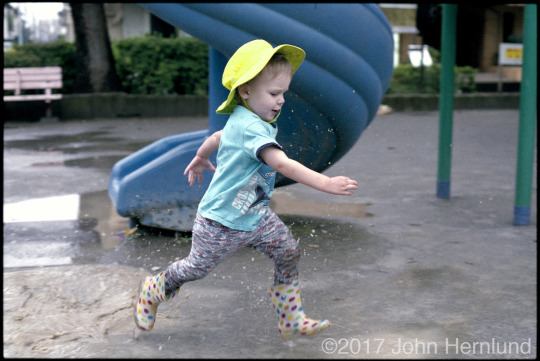
Shown above is a shot of my 2-year-old son running through a deep puddle at the park. I set the aperture to f/4 and it metered around 1/125, barely fast enough to catch an action shot but allowing me to get better depth of field and anticipate focus as he ran past.
I also tried several shots using flash, and the results were instructive and useful. In aperture priority mode it always syncs at 1/250 sec, which is good enough to freeze motion, but it may be too fast to properly expose dimly lit backgrounds. You can see this in the result below, my daughter was strongly illuminated compared to her background. Although my son and the surroundings caught a little flash, they are relatively dim owing to the inverse-square intensity fall-off with distance from the source. Next time I shoot with flash I will try manual flash settings to better expose the background, and tinker with modes on the flash itself.
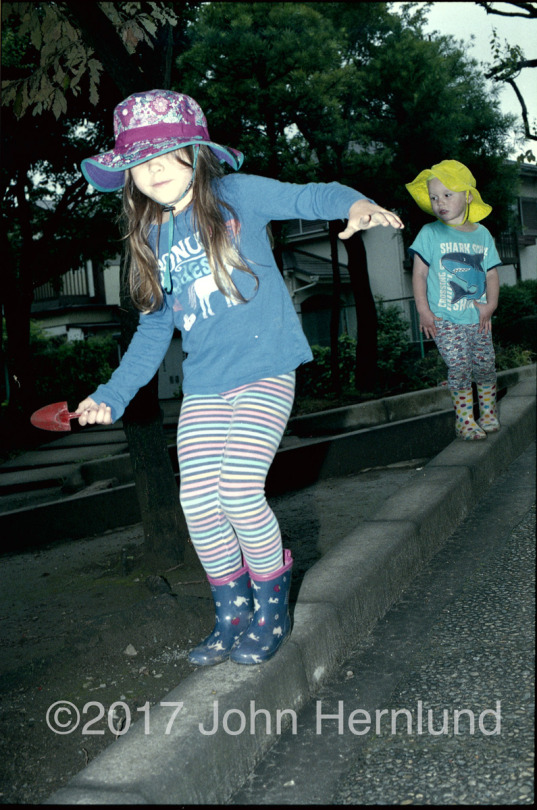
Compared to the F3
I feel as if this camera should be compared to the F3, which is also considered by some to be the pinnacle of Nikon manual film SLRs.
With the FM3a I enjoy having (1) the option to shoot with a purely mechanical shutter at (2) speeds up to 1/4000 sec, whereas the F3 is electronic-only and maxes out at 1/2000 sec. I also like (3) the mechanical needle to display the light meter reading, rather than the primitive dim LCD of the F3. The (4) regular hot shoe mount atop the viewfinder is far easier to use than the F3 flash mount, which requires an adapter and places the flash over the film rewind reel. I have already enjoyed the (5) the AE-Lock button on the back right next to the film advance lever, it is very easy to reach and somehow more comfortable to use than the front button on the F3. Also the (6) -1EV flash compensation button on the FM3a body to the left of the lens, although it is not so easy to reach while shooting it is a highly practical addition. Of course the FM3a is also (7) lighter and (8) slightly smaller than the F3 (HP), thus easier to carry in a bag with any standard lens mounted. And while I’m sure it is a very minor difference, I was noticing that (9) the metering on the FM3a in aperture priority seemed to be spot on the money, and I wonder if this is a matter of technological improvements, the stepless metering system in the FM3a, or my lack of scientific comparison and just basing this on a limited number of photos so far. Finally, the (10) film spy window in the rear door is great to see which film is loaded, rather than guessing from the ISO setting or putting a torn piece of film carton in the holder on the back.
In which ways do I prefer the F3 over the FM3a? The biggest practical difference is the lack of a purely mechanical T (timer) setting on the shutter speed dial of the FM3a. And the F3 shoots as slow as 8 seconds on the dial, while the FM3a bottoms out at 1 second. Clearly the F3 is going to be better for long exposures than the FM3a (although it does have a B setting, so it is not impossible to do so using a shutter release plunger cord attachment). Another persistent difference that jumps out is the beautiful quiet sound and feel of the mirror slap and shutter release on the F3, which is butter smooth and has a solid mechanical feel to it. It is extremely enjoyable, I recommend feeling this if you’ve never shot a F3. The FM3a, on the other hand, is quite sharp and loud. I gather that this is probably an artifact of the powerful shutter mechanism that combines both electronic and mechanical controls, and fires at speeds up to 1/4000 sec. Nevertheless, the FM3a is not a camera that you can shoot without being heard, while the F3 is a bit more laid back (though by no means the quietest either). The other thing that comes to mind is the power switch on the F3 vs. the FM3a. The F3 uses a simple switch under the shutter release, and is easy to flip on and off (though easy to forget to turn it off). On the FM3a the film wind lever has to be pulled back out to about the 30˚ position, this is the camera’s “power on” and it won’t fire unless the lever is pulled back into this position. The thing is, it isn’t just a slight protrusion outwards, it definitely pokes out. Since I am left-eye dominant and use my left eye for the viewfinder, I need to angle my face away from the camera while shooting, in order to keep the lever out of my right eye. On the other hand, this does make it quite easy to advance the film lever, though the F3 also has beautiful lever action and is no slouch either.
Summary
These are my impressions so far, after using it for just a couple weeks. A week ago I loaded some Ilford FP4 Plus 125 monochrome, which is really fun in the daylight with an orange filter. But that was just before the weather turned to crap. Anyways, it will clear up, and I am eager to see how well it works in black and white exposures, with and without color filters. My thoughts may change/evolve more in the future, but right now I am very happy to shoot this FM3a, and I can already tell that it will be a close friend.
0 notes
Photo
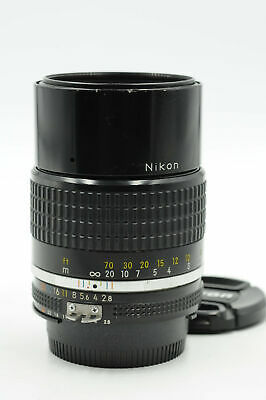
%^ Nikon Nikkor AI-S 135mm f2.8 Lens 135/2.8 AIS #864 https://ift.tt/2yIjdSd
0 notes
Photo
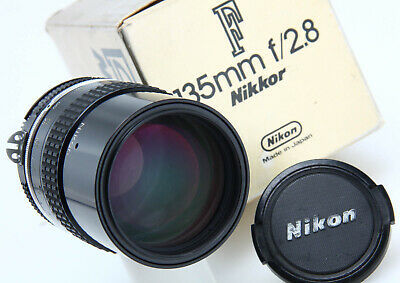
%^ Nikon Nikkor AI 135mm f2.8 mfLens sn#827309 135/2.8 AI MINT ib 388402 https://ift.tt/2XfhPPp
0 notes
Photo

%^ Nikon Nikkor AI-S 135mm f2.8 Lens 135/2.8 AIS #864 https://ift.tt/2zJtvSd
0 notes
Photo
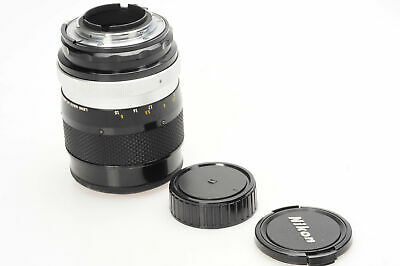
%^ Nikon Nikkor AI 135mm F2.8 QC Lens 135/2.8 #601 https://ift.tt/2KvPLkJ
0 notes
Photo

%^ Nikon Nikkor Non-AI 135mm f2.8 Q Nippon Kogaku Lens 135/2.8 #606 https://ift.tt/2JjPktl
0 notes
Photo

%^ Nikon Nikkor 135mm F2.8 AI-S lens for film/digital 135 mm F/2.8 AIS Exc glass https://ift.tt/3b2YN3R
0 notes
